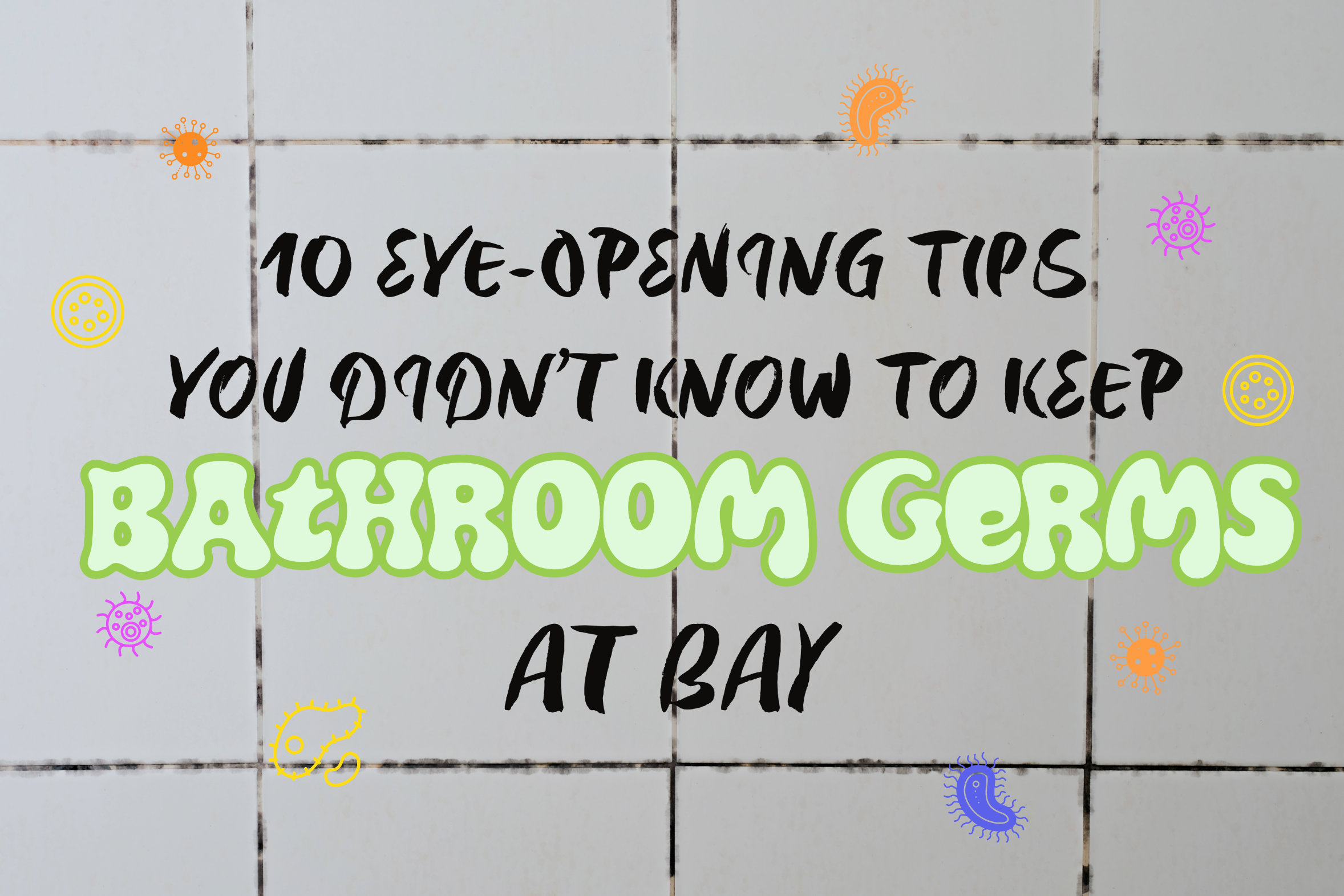As is well-known, bathrooms are notorious for harboring germs due to moisture, bacteria, and other microbes. In essence, bathrooms provide an ideal environment for germs to flourish. We invite you to join us today as your dependable professionals from Lancaster Plumbing & Drain share ten enlightening tips to effectively combat bathroom germs through the promotion of helpful hygienic practices and sanitary habits.
Germiest Areas in Your Bathroom:
Before we delve into our tips, it is useful to identify the areas in your bathroom that are most prone to germs. These areas include:
- Toilet seats and handles
- Sink faucets and handles
- Shower curtains and bath mats
- Towels and washcloths
- Countertops and surfaces
Types of Bacteria Found in Bathrooms:
Now, let’s delve into the various types of bacteria commonly encountered in bathroom environments:
- E. coli
- Staphylococcus
- Salmonella
- Influenza virus
- Norovirus
10 Eye-Opening Tips to Keep Bathroom Germs at Bay:
Handwashing:
Proper handwashing is crucial, and it’s always good to reinforce this. Ensure that everyone in your household knows the correct way to scrub their hands with soap and warm water for at least 20 seconds. Following CDC guidelines, effective handwashing is a fundamental practice to prevent the spread of germs.
Bathroom Cleaning
Not many people like to clean the bathroom. To make it easier on yourself and keep track of it getting done, designate a day each week for cleaning your bathrooms. Establishing a routine for thorough bathroom cleaning will help you stay organized and ensure it is completed. Additionally, another great tip to use is to keep antibacterial wipes easily accessible in your bathrooms. Using wipes for quick and convenient disinfection helps control the spread of germs in between regular cleaning sessions.
Toothbrushes
Don’t forget to store toothbrushes with covers! Doing this will help prevent airborne bacteria from landing on toothbrushes, as it is crucial for maintaining oral hygiene. Factors such as proximity to the toilet, aerosolized particles when flushing, and contact with hands can contribute to bacterial contamination, so keeping them covered is your best option.
Toilet Flushing
On the same note, to minimize the spread of airborne bacteria from the toilet, it is advisable to close the toilet lid before flushing – everytime. This practice helps contain bacteria and prevents the dispersion of airborne particles from the toilet into the bathroom.
Touchless Faucets
Next, you can minimize surface contact by utilizing hands-free fixtures, such as motion-sensor faucets, to mitigate the risk of cross-contamination. If this is feasible step for you to take on, its definitly worth considering.
Disinfect Toilet Brushes
Toilet brushes – it’s easy to overlook them, but they need to be cleaned, too. Ensure proper hygiene by cleaning your toilet brush after every use. Moreover, toilet brushes with disposable ends are a fantastic option, but if a disposable brush is not an option for you, make it a habit to clean the brush by pouring hot water and bleach directly over it and straight into the toilet bowl (so germs don’t spread further). You can air-dry it before returning it to the holder by propping the handle of the toilet brush in between the toilet bowl and toilet seat lid with the brush toward the bowl. This practice helps prevent bacterial buildup and maintains cleanliness.
Shower Curtains
To ensure a clean and hygienic shower space, you should regularly replace shower curtains or choose washable fabric liners. Bacteria and mold can build up quickly on these liners, so if they aren’t changed or washed every so often, they will become a true “hotspot” for the bacteria.
Bidets
Another alternative to consider is a bidet. Bidets offer a more sanitary option compared to traditional toilet paper, minimizing the risk of germ transmission through hand contact. Additionally, they are reasonably priced and can be easily self-installed – definitely worth considering!
Bathroom Ventilation
After every shower or bath that is taken, your bathroom should be properly ventilated after each use. Therefore, implementing the use of exhaust fans or open windows to reduce moisture helps avoid creating an environment less favorable for bacterial growth.
Professional Drain Cleaning
Household drains provide an ideal environment for bacterial growth, thanks to the buildup of organic matter, soap scum, and debris. To prevent the accumulation of bacteria and mold in your drains, homes should have a scheduled professional drain cleaning every 1-2 years. This helps maintain a healthy plumbing system, preventing clogs and unwanted bacterial growth. For further information, please do not hesitate to contact us.
Incorporating these tips into your routine will assist in achieving a reduced germ presence in your bathroom and considerably lowering the risk of bacterial transmission. Maintaining good bathroom hygiene is crucial for overall health, maintaining a clean home, and even ensuring the smooth operation of your plumbing system.
Call Lancaster Plumbing & Drain today (740) 796-8998, or schedule an appointment online now by clicking here!




